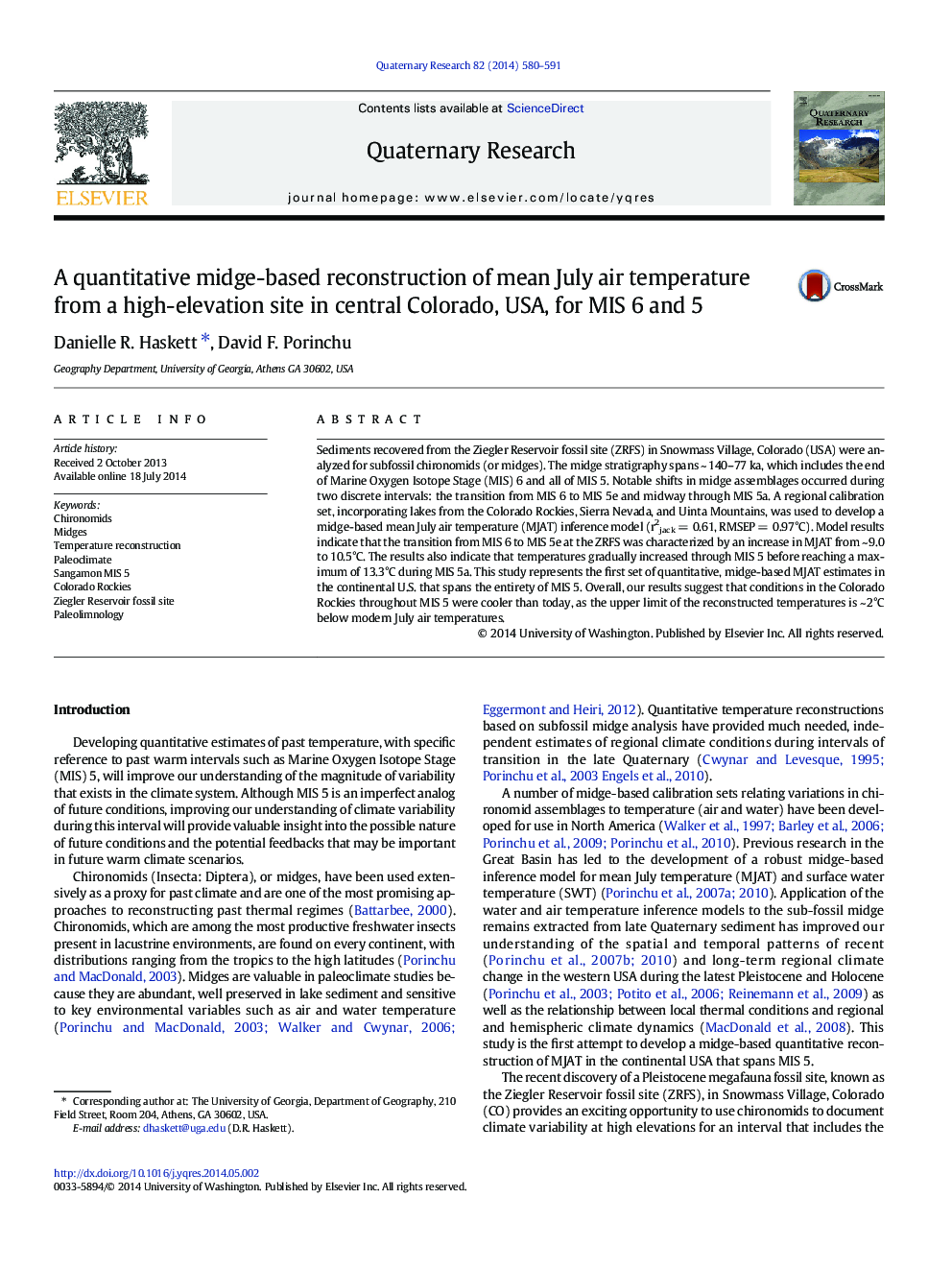| Article ID | Journal | Published Year | Pages | File Type |
|---|---|---|---|---|
| 1045275 | Quaternary Research | 2014 | 12 Pages |
Abstract
Sediments recovered from the Ziegler Reservoir fossil site (ZRFS) in Snowmass Village, Colorado (USA) were analyzed for subfossil chironomids (or midges). The midge stratigraphy spans ~ 140-77 ka, which includes the end of Marine Oxygen Isotope Stage (MIS) 6 and all of MIS 5. Notable shifts in midge assemblages occurred during two discrete intervals: the transition from MIS 6 to MIS 5e and midway through MIS 5a. A regional calibration set, incorporating lakes from the Colorado Rockies, Sierra Nevada, and Uinta Mountains, was used to develop a midge-based mean July air temperature (MJAT) inference model (r2jack = 0.61, RMSEP = 0.97°C). Model results indicate that the transition from MIS 6 to MIS 5e at the ZRFS was characterized by an increase in MJAT from ~ 9.0 to 10.5°C. The results also indicate that temperatures gradually increased through MIS 5 before reaching a maximum of 13.3°C during MIS 5a. This study represents the first set of quantitative, midge-based MJAT estimates in the continental U.S. that spans the entirety of MIS 5. Overall, our results suggest that conditions in the Colorado Rockies throughout MIS 5 were cooler than today, as the upper limit of the reconstructed temperatures is ~ 2°C below modern July air temperatures.
Related Topics
Physical Sciences and Engineering
Earth and Planetary Sciences
Geology
Authors
Danielle R. Haskett, David F. Porinchu,
